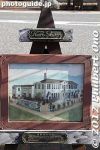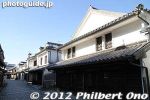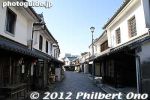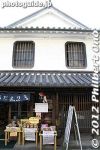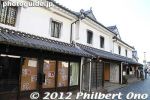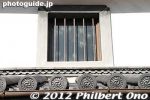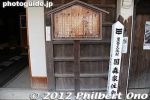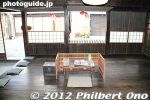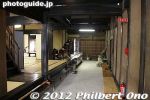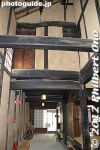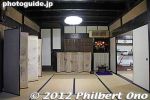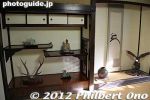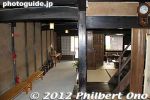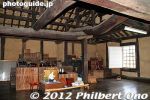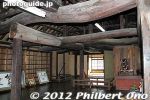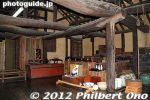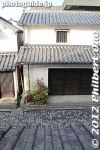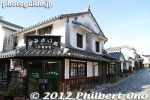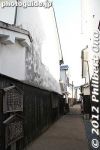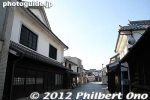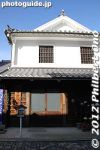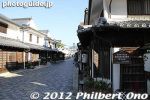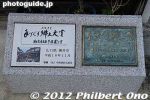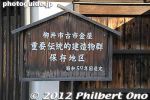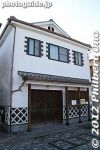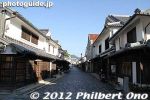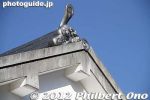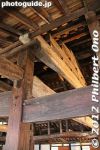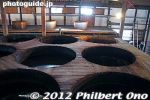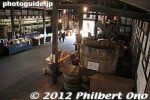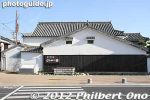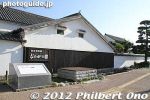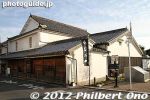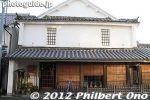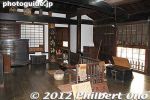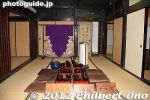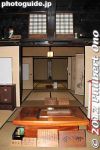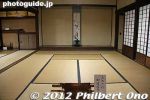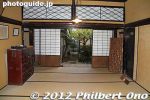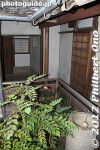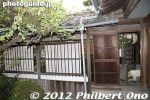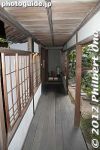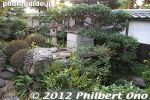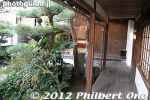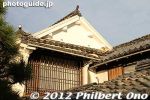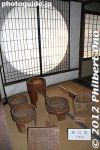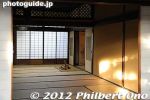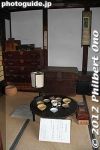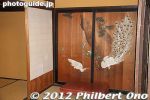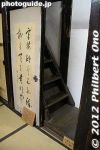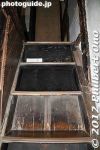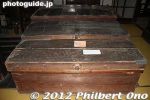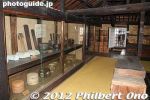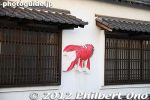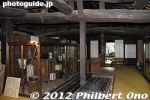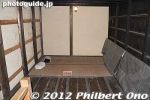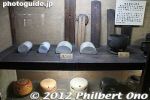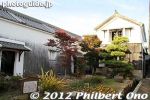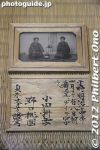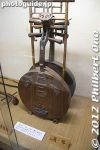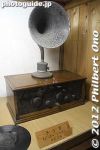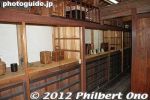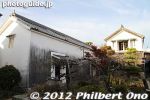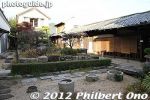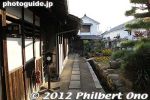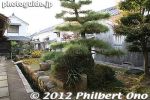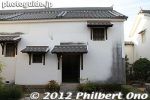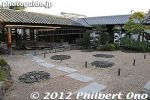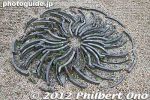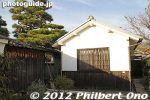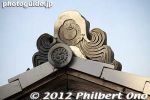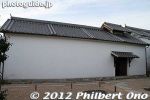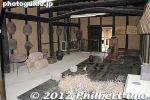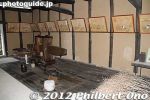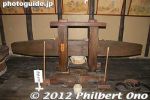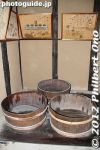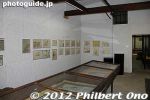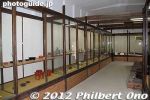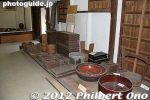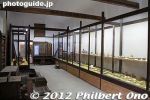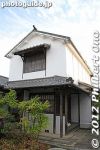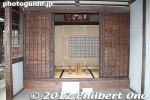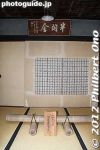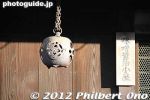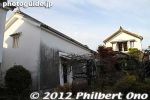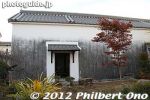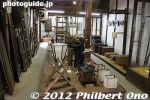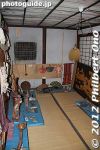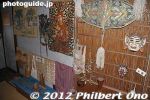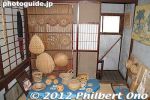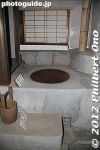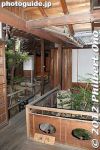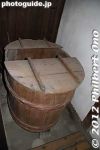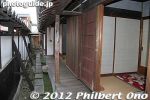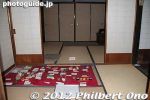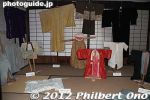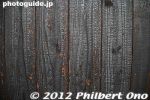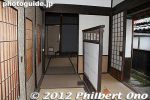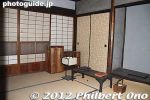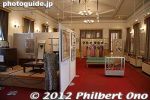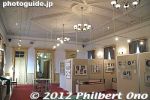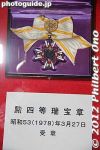 Image search results - "yanai" Image search results - "yanai" |
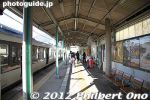
JR Obatake Station platform.
|
|
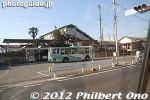
There is bus transportation from Obatake Station, but they run once an hour or so. If you want to visit the museum, you can take a nori-ai taxi (a small van) at Obatake Station costing 400 yen to the museum. The ride is maybe 10-15 min. or so.
|
|
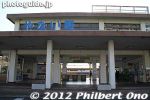
Central Yanai has a beautiful street of traditional buildings having traditional white walls (shirakabe). This area is also a National Important Traditional Townscape Preservation District (重要伝統的建造物群保存地区).
|
|
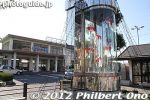
The white-walled street is called Shirakabe Machinami (白壁の町並み), a short walk from JR Yanai Station.
|
|
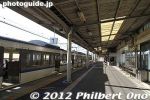
Train platform at JR Yanai Station.
|
|
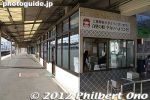
JR Yanai Station.
|
|
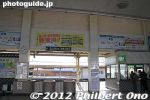
Inside JR Yanai Station.
|
|

Map of central Yanai.
|
|
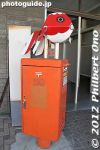
The goldfish is the symbol of Yanai, Yamaguchi. Here's on atop a mailbox.
|
|
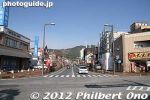
Road in front of JR Yanai Station. Walk straight on this road to the white-walled street.
|
|
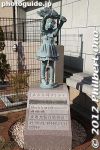
A few scupltures along the road to the white-walled street. Yanai, Yamaguchi
|
|

Directional signs in English.
|
|
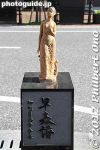
Yanai, Yamaguchi
|
|
|

About Yanai's white-walled street.
|
|
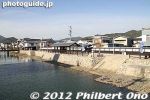
Cross the river.
|
|
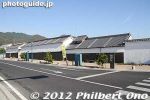
First you see Muroya-no-Sono, a longhouse museum.
|
|
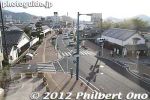
Street heading to JR Yanai Station.
|
|
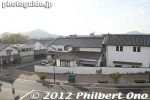
Entrance to the white-walled street. Even the private home on the right is white.
|
|
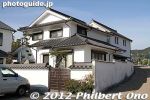
Private home blending in with the white-walled street in Yanai, Yamaguchi.
|
|

Sign indicating that this area is an Important Traditional Townscape.
|
|

About Yanai's goldfish connection.
|
|
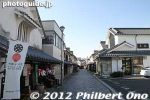
Walking along Yanai's white-walled street.
|
|
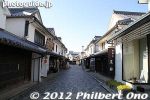
Yanai's white-walled street has a long history going back to the Muromachi Period (1337-1573). It used to be a merchant quarter. The street is about 200 meters long.
|
|
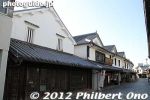
Buildings are beautiful and in unison. Very impressive. Most buildings are private, but there are a few tourist shops and homes open to the public.
|
|
|
|
|
|
|
|
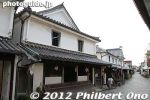
This is the Kunimori family home, open to the public. Important Cultural Property. Admission 200 yen. Yanai, Yamaguchi Prefecture.
|
|
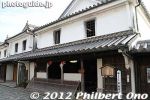
The Kunimori home is a former merchant's home. Open 9 am - 5 pm. Closed Mon.
|
|
|
|

About the Kunimori merchant's home.
|
|
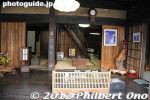
Inside the Kunimori-ke merchant's home.
|
|
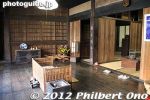
The Kunimori merchant's home is large and spacious. You can see how Edo Period merchants lived.
|
|
|
|
|
|
|
|
|
|
|
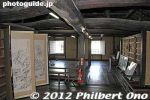
2nd floor of Kunimori merchant's home.
|
|
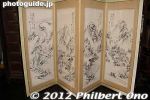
Folding screen
|
|
|
|
|
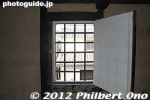
Window on the 2nd floor of Kunimori merchant's home..
|
|
|
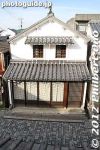
Yanai, Yamaguchi
|
|
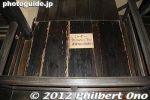
Don't step on this.
|
|
|
|
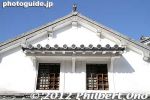
Yanai, Yamaguchi
|
|
|
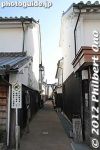
Narrow alley
|
|
|
|
|
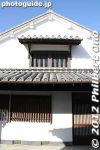
Yanai, Yamaguchi
|
|
|
|
|
|
|
|
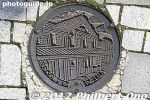
Manhole in Yanai, Yamaguchi based on the white-walled townscape.
|
|
|
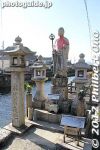
Atago Jizo statue to protect against fires.
|
|

About the Jizo statue
|
|
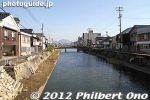
River runs parallel to the white-walled townscape.
|
|
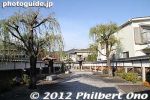
Park
|
|
|
|
|
|
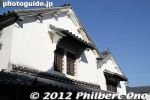
Yanai, Yamaguchi
|
|
|
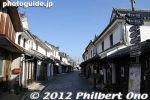
They did very well in preserving this traditional townscape. But I did see one house that was totally modern and didn't match the white-wall homes.
|
|
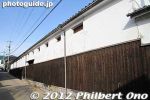
Sagawa Soy Sauce Storehouse (Kura)
|
|
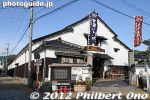
Sagawa Soy Sauce Storehouse (Kura)
|
|
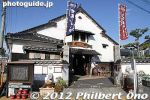
Entrance to the Sagawa Soy Sauce Storehouse (Kura), a very large building with white walls.
|
|

About the Sagawa Soy Sauce Storehouse (Kura). They make a special kind of soy sauce called kanro soy sauce.
|
|
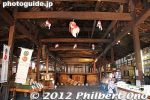
Inside the Sagawa Soy Sauce Storehouse (Kura).
|
|

Shoyu soy sauce factory.
|
|
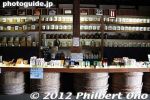
Shoyu gift shop.
|
|
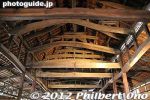
Ceiling of Sagawa Soy Sauce Storehouse.
|
|
|
|
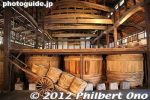
Look at this huge barrels of shoyu.
|
|
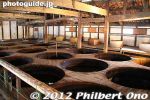
Huge barrels of soy sauce for aging. This was very impressive. The smell of shoyu in the air.
|
|
|

How they make shoyu.
|
|

Mixing the shoyu while it ages for 1.5 year.
|
|

It takes a few years to make the soy sauce.
|
|
|
|
|
|
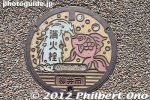
Goldfish manhole at Yanai, Yamaguchi.
|
|
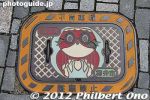
Goldfish manhole at Yanai, Yamaguchi.
|
|
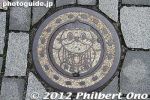
Goldfish manhole at Yanai, Yamaguchi.
|
|
|
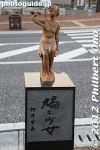
Yanai, Yamaguchi
|
|
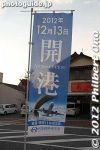
Iwakuni-KIntaikyo Airport will open on Dec. 13, 2012.
|
|
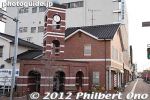
Music box Museum
|
|
|
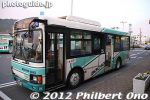
Bocho bus in front of Yanai Station.
|
|
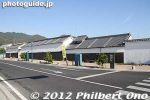
Muroyano-sono is a long house (Machiya) museum, formerly the estate of an oil merchant. It is adjacent to Yanai's townscape of white-wall buildings.
|
|
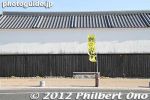
Probably built in 1702, Muroyano-sono consists of several buildings clustered together. They include the main building (omoya), main storehouse (hongura), and rice storehouse (komegura).
|
|
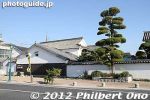
Muroyano-sono is open 9 am to 5 pm and closed on Wed. and during the year end and New Year's period. Admission is a few hundred yen.
|
|
|
|
|
|
|
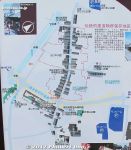
Map of Yanai's traditional townscape area in Furuichi/Kanaya.
|
|
|
|
|

Floor plan of Muroyano-sono.
|
|
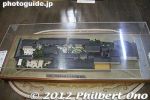
Scale model of Muroyano-sono.
|
|
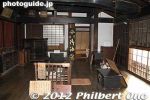
Entrance area of main building, serving as the business office.
|
|
|
|
|
|
|
|
|
|
|
|
|
|
|
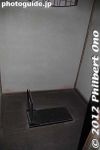
Toilet
|
|
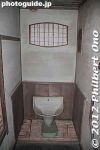
Urinal
|
|
|
|
|
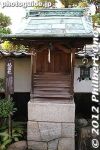
Small shrine outside.
|
|
|
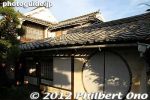
Moon window
|
|
|
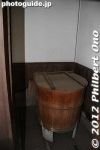
Bath tub
|
|
|
|
|
|
|
|
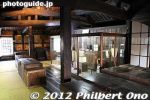
Upstairs of main building (omoya).
|
|
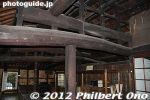
Ceiling beams
|
|
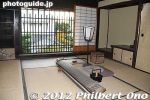
Exclusive room with a koto.
|
|
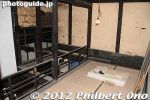
Maid's room
|
|
|
|
|
|
|
|
|
|
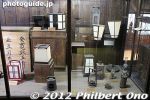
Old lanterns
|
|
|
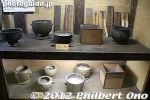
Charcoal heaters
|
|
|
|
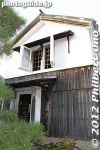
Gadget storehouse (Dogugoya)
|
|

Inside the Gadget storehouse (Dogugoya).
|
|
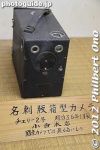
Gadget storehouse (Dogugoya) included old cameras.
|
|
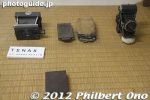
Old cameras
|
|
|
|
|
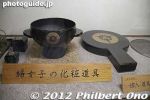
Make-up instruments for women.
|
|
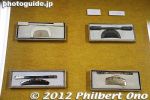
Combs
|
|
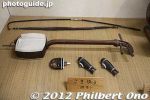
Samisen
|
|
|
|
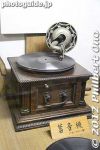
Phonograph
|
|
|
|
|
|
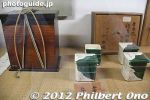
Bento lunch boxes
|
|
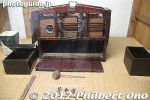
For tea
|
|
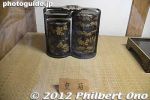
Bento lunch boxes for rice.
|
|
|
|
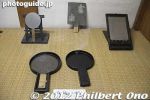
Mirrors
|
|
|
|
|
|
|
|
|
|
|

Courtyard with roof tile decorations.
|
|
|
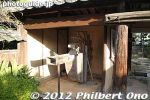
Farming tools
|
|
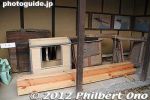
Palanquin
|
|
|
|
|
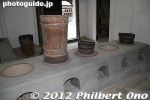
Kitchen stove
|
|
|
|
|
|
|
|
|
|
|
|
|
|
|
|
|
|
|
|
|
|
|
|
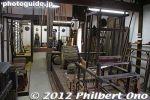
Weaving
|
|
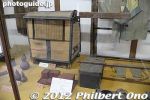
Palanquin
|
|
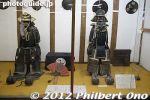
Armor
|
|
|
|
|
|
|
|
|
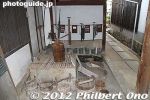
Firefighting equipment
|
|
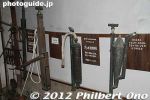
Firefighting equipment
|
|
|
|
|
|
|
|
|
|
|
|
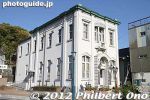
Adjacent to Muroyano-sono is this distinctive building hat used to be Suo Bank built in 1907 and designed by Sato Setsuo. It is now the Tourist Information Office and local museum. 町並み資料館
|
|

Former Suo Bank serving as tourist information office.
|
|

About the former Suo Bank building.
|
|
|
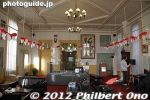
Inside the Yanai tourist information office and local museum.
|
|
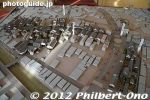
Scale model of Yanai's traditional townscape.
|
|
|
|
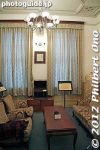
The second floor also has exhibits.
|
|
|
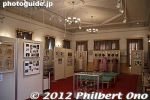
Exhibits about a prominent local singer.
|
|
|
|
|
|
|
|
|













